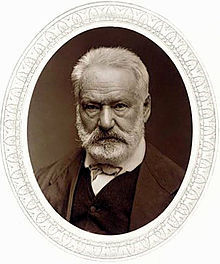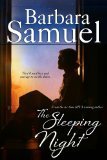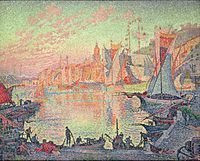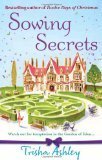Hannah Fielding's Blog, page 152
July 19, 2012
The Burning Embers flower
When deciding on a title for your novel, the challenge is to find one that fits the book and conveys its essence, while ensuring it is sufficiently original not to conflict with another work.
As in Burning Embers, I usually have a title in mind from early on in the writing process – and in Burning Embers I weave it into the text itself:
Though the afternoon sunshine was beginning to fade, the air was still hot and heavy. Coral was struck by the awesome silence that surrounded them. Not a bird in sight, no shuffle in the undergrowth, even the insects were elusive. They climbed a little way up the escarpment over the plateau and found a spot that dominated the view of the whole glade. Rafe spread out the blanket under an acacia tree. They ate some chicken sandwiches and eggs and polished off the bottle of cordial. They chatted casually, like old friends, about unimportant mundane things, as though they were both trying to ward off the real issue, to stifle the burning embers that were smoldering dangerously in both their minds and their bodies.
Once the title has fixed in my mind, it’s time to do a little research online and see whether anyone else is using it. I was delighted by what I found when I googled ‘burning embers’. What discoveries! The following are all examples of ‘Burning Embers’:
Several wonderfully passionate songs on YouTube (see my post http://www.hannahfielding.net/?p=293)
A six-piece rock band hailing from Wainuiomata
A terracotta-like paint shade by Dulux
Some kind of spell on World of Warcraft
Ruby earrings
A scented candle
A flowering shrub: the Tropaeolum majus ‘Burning Embers’ (Nasturtium ‘Burning Embers’).
The flowers are my favourite. Aren’t the colours glorious? I think I will order some and plant them in my gardens in England and France, as a summer-time reminder of my first novel.
July 17, 2012
Making hay while the sun shines
July 16, 2012
Favourite writer: Victor Hugo
Although I now call England my home and list the Brontë sisters and Jane Austen among my favourite authors, for the first twenty or so years of my life, I read almost exclusively French books. At my convent school, Notre Dame de Sion, the nuns gave me a thorough grounding in French classics, and so drawn was I by the writing that I chose to go on and read French literature at university.
Say ‘French literature’ to a non-French person and one of the first writers they will call to mind is the Romantic writer Victor Hugo. In France, Hugo is a revered poet; but worldwide he is best remembered for two novels: Les Misérables (1862) and Notre-Dame de Paris (1831), better known as The Hunchback of Notre-Dame. I have read and reread both of these works by Hugo many times over the years – they are such powerful, evocative books, imbued with a stirring sense of setting and history, and there is much to admire in Hugo’s courageous approach to exploring deep-rooted issues in society and the great care he takes in crafting each story.
Notre-Dame de Paris is so-named for the famous Parisian cathedral where the story takes place, and the protagonists, Quasimodo and Esmeralda, are equally well-known worldwide, as is the tragic tale of their love. Anthony Hopkins took on the role of Quasimodo in the 1982 movie Hunchback, and of course more recently Disney adapted the novel into a cartoon. But it surprises me that the book isn’t more established in popular culture. I’d love to see a more current adaption. Perhaps directors think it too difficult to develop a love story when the male protagonist is so disfigured; but then The Phantom of the Opera runs along a similar vein, and the 1994 Joel Schumacher film was wonderfully passionate.
Les Misérables, conversely, has captured imaginations for well over a century; its first film adaptation was back in 1909, and of course the Claude-Michel Schönberg musical of the book recently celebrated its 25th anniversary. The novel is long indeed; split into five volumes (and some publishers split the entire work across two books), but it is worth the time it takes to read it. For me, there is something wonderful about sitting down with a really thick book, knowing that for so many hours ahead I will be transported to another world. The plot makes for compelling reading, and Hugo’s prose translates into poetic English. There is such intelligence in his words:
“Even the darkest night will end and the sun will rise.”
“To love another person is to see the face of God.”
“Laughter is sunshine, it chases winter from the human face.”
“It is nothing to die. It is frightful not to live.”
“Those who do not weep, do not see.”
If you haven’t read Notre-Dame de Paris and Les Misérables, I highly recommend you do so. I notice that on Amazon UK at the moment you can buy Notre-Dame de Paris and both volumes of Les Misérables in the Wordsworth Classics edition for a snip at just £5.97!
July 14, 2012
The most romantic lines in literature
My readers – especially those of you who follow me on Twitter – know me as a writer who takes great inspiration from quotations. When it comes to aphorisms and proverbs, I am something of a collector, noting them down for inspiration in my writing, or to share on Twitter. Recently, while researching I stumbled across a news article on a survey conducted to discover the most romantic lines in literature (http://uk.reuters.com/article/2011/02/10/arts-us-books-romance-idUKTRE7198H220110210). Here are the results, in order:
“Whatever our souls are made of, his and mine are the same.” – Emily Brontë
“If you live to be a hundred, I want to live to be a hundred minus one day so I never have to live without you.” – A.A. Milne
“But soft! What light through yonder window breaks? It is the east and Juliet is the sun.” – Shakespeare
“He was my North, my South, my East and West, My working week and my Sunday rest, My noon, my midnight, my talk, my song; I thought that love would last forever: I was wrong.” – W.H. Auden
“You know you’re in love when you don’t want to fall asleep because reality is finally better than your dreams.” – Dr. Seuss
“When you fall in love, it is a temporary madness. It erupts like an earthquake, and then it subsides. And when it subsides, you have to make a decision. You have to work out whether your roots are become so entwined together that it is inconceivable that you should ever part.” – Louis de Bernières
“Grow old along with me! The best is yet to be.” – Robert Browning
“For you see, each day I love you more. Today more than yesterday and less than tomorrow.” – Rosemonde Gerard
“But to see her was to love her, love but her, and love her forever.” – Robert Burns
“I hope before long to press you in my arms and shall shower on you a million burning kisses as under the Equator.” – Napoleon Bonaparte, to wife Josephine
Such a mixture – from poetry, from fiction, from the world of theatre; written privately between a man and wife; written for children, or for adults.
What do you think? Would you pick these for your top ten? For me, there would have to be an Elizabeth Barrett Browning quote; perhaps, ‘How do I love thee?/Let me count the ways./I love thee to the depth and breadth and height/My soul can reach.’ And I’ve always loved Mark Twain’s ‘Wheresoever she was, there was Eden’, and Beethoven’s ‘Ever thine ever mine ever ours’.
And can a consideration of the most romantic words in literature be complete without Lord Byron? I will share with you now my favourite Byron poem, which makes me want to time-travel back to nineteenth century to a world where such wonderful romance was captured in verse.
She walks in beauty, like the night
Of cloudless climes and starry skies;
And all that’s best of dark and bright
Meet in her aspect and her eyes:
Thus mellow’d to that tender light
Which heaven to gaudy day denies.
One shade the more, one ray the less,
Had half impaired the nameless grace
Which waves in every raven tress,
Or softly lightens o’er her face;
Where thoughts serenely sweet express
How pure, how dear their dwelling-place.
And on that cheek, and o’er that brow,
So soft, so calm, yet eloquent,
The smiles that win, the tints that glow,
But tell of days in goodness spent,
A mind at peace with all below,
A heart whose love is innocent!
July 13, 2012
Book review: The Sleeping Night by Barbara Samuel
A beautiful, passionate, thought-provoking story about forbidden love; this book will be going on my ‘favourite romances’ shelf.
From the blurb:
An unforgettable romance in an unforgiving time. They’ll need love and courage to see the dawn. He’s a hometown native, returning from the war, determined to change the world he’d fought to protect. She’s the girl who’s been his secret friend since childhood, now a beautiful woman. Her war-time letters kept him alive. But he’s black, and she’s white. In 1946 Gideon, Texas, their undeniable love might get them both killed.
From the outset, I was drawn into the story by the compelling characters – courageous Angel, a lone white woman fighting to keep her independence after her father’s death, and Isaisah, her childhood friend who has seen too much in Europe during the war and can no longer tolerate the racism of the South. I found myself increasingly anxious as I read, seeing their love unfold in such a hostile environment – hoping so much they could find their way to each other but, knowing the reality of the setting and the historical era in which the book is set, fearing the only possible outcome could be tragedy.
Barbara is such a talented writer, conjuring up vivid mental pictures through her imagery that transported me to 1940s Texas and plunged me into the scenes. Here’s an example: ‘Isaiah sank down next to her. Bony knees stuck out from below his cut-off pants. His ankles were streaked, his shoes muddy, and he smelled like sunshine and dust and river water.’ I love that so much of the book has an authentic Southern feel in terms of tone and phrasing; and I really enjoyed the interweaving of letters sent during the war, which blend in a feel for war-time England and the two protagonists’ differing experiences of war.
In her dedication at the start of the book, Barbara mentions that this novel was ‘stashed away’, and it only saw the light of day thanks to an encouraging friend. Well, I am so very glad that Barbara did believe in the book enough to publish the book, because it was a true pleasure reading it, and I know that the touching story of Angel and Isaisah will remain in my imagination for years to come.
The Sleeping Night is available now from Amazon; click on the book cover below to visit the store.
July 12, 2012
A summer rose in my English country garden
July 10, 2012
Favourite artist: Paul Signac
One of my favourite styles of art is that of Pointillism: a technique in which the artist uses dots of colour to create an overall image. Notable artists who have used this technique include Vincent van Gogh, Georges Seurat, Henri-Edmond Cross and Andy Warhol at the start of his career. But for me, the master of this style of paining is Paul Signac, one of its early pioneers.
It was Monet who inspired architect Paul Victor Jules Signac to start painting, after he attended an exhibition of the artist’s work in the 1880s. He embraced the Impressionist style, but when in 1884 he met Georges Seurat, he was inspired to abandon blended colours and experiment with large, confidently painted dots that, when viewed from paces back, would fuse into a scene. The result is paintings that are dizzying and meaningless when looked at closely, but are wonderfully colourful and vivid when admired from afar.
A Frenchman who was born in Paris, Signac travelled extensively around the world and his home country, painting scenes that inspired him. I am especially drawn to Signac’s works because many of them are set in the region where I have a home in the south of France, near St Tropez. The painting below is one example of his southern French works; this one depicts the port of St Tropez, a place I love to visit now. Signac kept a boat at the port, which he used for his travels around the Mediterranean. A Google Image search for ‘Paul Signac, St Tropez’ will provide a gallery of his other fine paintings.
Signac’s paintings form part of the neo-impressionist art movement, which was a break from Impressionism and was based on more modern urban scenes and landscapes and a more scientific approach to lines and colours. Signac’s work significantly influenced Henri Matisse; indeed, Signac was the first person to buy a Matisse painting and support the young artist.
It was an exciting day, then, for art collectors and experts when in 2010 a new Signac work was discovered at a hotel in Volendam, Holland. Apparently, Signac had given the painting to the hotel as payment for accommodation, and for years it had hung on a rusty nail in the lobby. How I’d love to have made that discovery!
July 9, 2012
Happiness: a definition and a choice
Happiness is what we seek in life. Other things – love, laughter, accomplishments, security – are about making us happy; love, most of all. So it follows that at the core of a romance book is the characters’ search for happiness.
In Burning Embers, Rafe and Coral fall in love, and of course their feelings of love are a source of happiness. But to secure a lifetime of happiness – a happy-ever-after – they have to first realise that being together is their definition of happiness, and then choose to have that happiness in their lives.
It sounds so simple: you want to be happy, and so you work out what makes you happy and then choose to be happy. But fear can get in the way. What if you inaccurately define happiness? What if your instincts are wrong? What if you open your heart and get hurt? And what if you choose a path that turns out differently to how you imagine?
By avoiding self-honesty about what makes you happy, and avoiding decisions that allow you that happiness, you play it safe. You keep control. As Robert Anthony put it: ‘Most people would rather be certain they’re miserable, than risk being happy.’ But actually, you may hurt yourself more by shying away from making a choice than you would by taking the plunge. So all the while that Coral holds back from Rafe, because she is frightened to trust him, and Rafe holds back from Coral, because he hates himself and so has no room to love another, each is miserable. Only by defining their love as what will make them happy, and choosing to allow that happiness, will they ever have the lives they want and deserve.
What Rafe, in particular, has failed to see is that he alone has the power to create his own happiness. As author Wayne Dyer pointed out, ‘Simply put, you believe that things or people make you unhappy, but this is not accurate. You make yourself unhappy.’ Rafe is punishing himself; blaming the past for his current inability to be happy. He needs to reach a point where he finds the conviction and the peace inside to choose a happy ending to his story. In the words of Holbrook Jackson: ‘Happiness is a form of courage.’
July 6, 2012
After the happy-ever-after
It seems that barely a week goes by without a new story hitting the headlines about a celebrity couple splitting up. In the past few weeks I’ve read of Johnny Depp’s split from his wife of 14 years, and then Tom Cruise and Katie Holmes heading for the divorce courts. And after all that high romance at the start of their relationship too!
It’s saddening to see people once so much in love walking away from their relationship. Most people love a good romance, whether that’s in a book or a film, or a ‘real-life’ one played out by people in the public eye. The world melted over William and Kate’s Royal Wedding because we so wish them well – a lifetime of happiness together. We hope that William will follow in the footsteps of his grandmother, who will celebrate her 65th wedding anniversary this year.
But with constant reminders of relationships breaking down, is it possible to keep believing in the happy-ever-afters of romance novels such as those I write?
One of my favourite lines from JM Barrie’s Peter Pan is this: ‘Every time a child says “I don’t believe in fairies” there is a little fairy somewhere that falls down dead.’ I think perhaps the same is true of believing in a love that lasts. Every time you hear of a relationship that’s ended, you have that choice: let it make you cynical and say ‘I don’t believe in happy endings’, or keep your faith, and the positive, dreamy, happy glow it gives you, and believe.
I think those, like me, who love to read romance novels are united by their belief in a happy ending. Now of course I am not suggesting that a happy-ever-after is perfect or easy: long-term relationships have their ups and downs and require a good deal of work to maintain. As readers, we know this. But we hold fast to the belief that the highs can outweigh the lows and the effort; and those highs can be ever so romantic.
As someone who is still as much of an ardent romantic as she was in her dreamy-eyed teens, I can think of no better job than writing love stories that end happily. Which is probably why I really struggled with the ending of the wonderful and superbly written One Day by David Nicholls. And of The Time Traveler’s Wife by Audrey Niffenegger. And of Romeo and Juliet. When I close a book, I want to have a light and happy heart. So in my novel Burning Embers, I leave readers to imagine the future of my lovers, Rafe and Coral – babies, homes, travels, and so many romantic moments along the way.
If you are also a happy-ever-after, I recommend visiting the Happily Ever After Cafe group on Goodreads, where you’ll find hundreds of other readers discussing uplifting romance novels and movies. I hope to see you there!
Book review: Sowing Secrets by Trisha Ashley
Fran lives in North Wales, ‘the most beautiful place in the world’, is married and has a teenage daughter, Rosie, at university. But her marriage is not going well, she has nothing in common with her husband, Mal, and he doesn’t want to spend any time with her. She wants to potter around in her garden growing roses and drawing cartoons in her studio at the bottom of the garden. He works with computers and is often away for long periods. Rosie wants to finally know exactly who her father is, but Fran doesn’t want to say; or maybe her silence is because she isn’t exactly sure. This book takes you through a few months in Fran’s life when her world is turned upside down by the men in her life, both past and present – her first serious boyfriend, her rebound one night stand, and her husband.
The book is centred on Fran’s love of roses and gardening, and with ‘the one night stand’ being a gardener, there are lots of references to all things horticultural which I enjoyed immensely, given my own love of gardening. What’s I liked most about this book, though, is its readability. It is like a chat with a friend over a cup of tea. The author’s uncomplicated way of writing draws you in – comforting and humorous, often making you smile:
‘Cleaning’s rightful place is as a displacement activity while you are psyching yourself up for something more interesting.’
‘One good shove and all my troubles would have been over. The thought might have shown on my face, because he stopped smiling and carried on down the stairs.’
Unusual for this chicklit genre, Fran is approaching middle-age, is already married, has a grown-up daughter from outside of the marriage and is a technophobe. But she is warm and funny, and endearingly likeable, if not a little potty at times – she often unconsciously sings or hums inappropriately timed songs. She has some charmingly funny moments, as well as some cringeworthy ‘can’t believe she said/did that’ ones. She is desperately trying to save her failing marriage, and it seems to be an impossible task. But there is a happy ending for Fran and some unexpected elements that leave a nice warm feeling when you close the book.
A warm, funny, romantic and uncomplicated read; perfect to take to the beach or get lost in on a park bench on a summer’s afternoon.
Sowing Secrets is available now from Amazon; click on the book cover below to visit the store.












